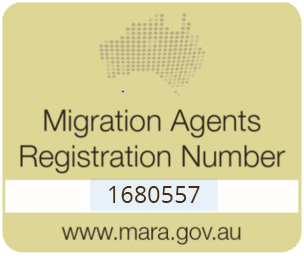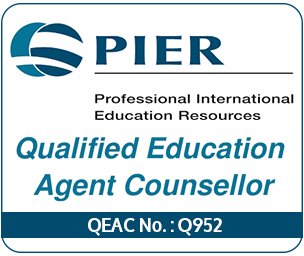
Subclass 494 Skilled Employer Sponsored Visa
The Subclass 494 Skilled Employer Sponsored visa along with the Skilled Work Regional Visa (subclass 491) will be introduced from 16th November 2019, abolishing the 187 (RSMS) Regional Visa. The new skilled regional provisional visa 494 will be allocated 9000 places per year. It will be available to skilled migrants along with their dependent family members.
What is the Skilled Employer Regional Visa?
The 494 subclass visa requires employer sponsorship and the position must be available for 5 years. As opposed to the 187 visa, the 494 visa does not grant permanent residency, however, a 494 visa holder is eligible for the 191 Skilled Regional Permanent Residency Visa in the future.
The visa has a three-stage process. The three stages are:
- Sponsorship
- Nomination
- Visa Application
Eligibility criteria for 494 Visa Application
Employer eligibility
Your employer can nominate you for the 494 subclass visa as per the following:
- The employer must be located in a designated regional area of Australia. Employers in Sydney, Brisbane, Gold Coast, Perth, and Melbourne cannot nominate under the subclass 494 visa category. The places like Newcastle, Wollongong, and the NSW Central Coast will become designated regional areas.
- Employers nominating an employee are liable to contribute $3,000 for small businesses and $5,000 for large businesses to the Skilling Australia Fund.
- The position for nomination figures on the relevant occupation list (among the 700 occupations)
- The employer has taken approval from the Regional Certifying Body (RCB) of the designated area.
- The position must be genuine, full-time, and available for five years.
- You must be remunerated at the market salary rate.
Employee eligibility
The Applicant:
- Needs to meet certain requirements related to skill, health, character, and English proficiency.
- Must be under 45 years of age at the time of application.
- Must have three years of full-time and relevant work experience in the nominated position.
- Can switch between jobs but will have to find a nominator within 90 days.
How will the subclass 494 visa lead to permanent residency?
The 494 Visa is valid for 5 years. A person has to live and work for at least three years under the 494 visa in the designated regional areas to apply for the 191 Permanent Residence (Skilled Regional) visa. The person has to show earnings of at least $53,900 annually for three years. If you have a partner featured in your 494 application, only one of you needs to show the three years of annual salary (through tax returns) at or above $53,900. Also, your partner can be the main applicant for the 191 Visa if they meet the above criteria.
Point to remember: An applicant holding a 494 visa does not need to be nominated by an employer for the 191 Visa.
Finally, here are a few key differences between the old 187 visa and the new regional subclass 494 visa.
- The period of time to work and live in Australia has been extended from two to three years.
- The visa validity increases to 5 years.
- The number of eligible occupations offered will also increase in the new visa.
- Applications for 494 Visa will be processed on priority.
- Regional Australia will be a broader term and will include all regions in Australia except Sydney, Brisbane, Metropolitan Melbourne, Gold Coast, and Perth.
If the 187 Visa has been lodged before 16th November 2019, the application will not be subject to the new visa changes. Also, the introduction of the Subclass 494 Visa will have no impact on the holders of existing visas.
The Subclass 482 Temporary Skill Shortage (TSS) Visa
The Subclass 482 Temporary Skill Shortage (TSS) visa was brought into effect from March 2018 by the Australian Government in place of the 457 Visa.
What is the 482 TSS Visa?
The TSS visa is a temporary visa that entitles a person to reside in Australia while working full-time in a designated position for a sponsored business or an employer. TSS visa applicants can include their dependent family members in their application. There are no age criteria to apply for this visa. The TSS visa allows applicants to work, study, and live in Australia.
Who is eligible for the TSS visa?
The TSS visa has three streams namely, short-term, Medium-term, and Labour-Agreement streams. The applicants whose work nature appears in the Short-term Skilled Occupations List (STOL) are eligible for a visa of up to two-years which can be further renewed for two years. Applicants of the Medium and Long-Term Strategic Skills List (MLTSSL) can apply for four years and can seek permanent residency after three years.
The eligibility criteria of the 482 VISA is as follows:
- Employer: The employer should have applied for approval of the nomination of the occupation that the applicant’s visa relates to. He must be an Approved Work Sponsor.
- Occupation: The work for which the employer wants to nominate an applicant must appear as an occupation on the Combined List of Eligible Skilled Occupations. To ascertain whether the proposed nominated occupation is accurately defined, the Department of Home Affairs (formerly DIBP) uses the Australian New Zealand Standard Classification of Occupations (ANZSCO).
- Applicant eligibility: The applicant must have worked in the occupation for at least two years. When examining a TSS visa applicant’s skills and qualifications, the Home Affairs case officers cross-reference both the position description and the TSS visa applicant’s employment and education history, which should comply with the criteria provided by ANZSCO.
Also, if the applicant does not belong to one of the exempted countries i.e. US, UK, NZ, Ireland or Canada, they need to meet the English language requirements while applying for the visa. They have to achieve a minimum score (as per the specified stream) in each of the 4 components on the IELTS test. Alternative tests can be used including TOEFL, PTE OET, Academic, CAE.
The applicant also has to meet the health and character criteria, along with a Police clearance certificate from the country where he has lived for 12 months or more after turning 16 years, in the last 10 years.
How do I obtain the 482 TSS visa?
The three-stage process of obtaining the 482-visa is as:
- Standard Business Sponsorship – TSS is an employer-sponsored visa, hence it requires a qualified employer who has approval as a Standard Business Sponsor. To obtain the Standard Business sponsor approval, the business has to reflect law-abiding and active work operations in Australia.
This includes:
- Identifying the correct ABN to apply
- Registering the business
- Providing Business Activity Statements(BAS) and financial statements
- Compliance with Australian workplace laws
- Showing interest in training Australian citizens and residents for work
- Nomination- After receiving the SBS application, the employer has to file a nomination for a position in their business that will be fulfilled by the 482 TSS visa holder or applicant.
Some requirements for this process are:
Labor Market Testing
When a business nominates a candidate for 482 Visa, they have to show that they tested the labor market. This implies that when they advertised for an employee vacancy, there were no candidates available to meet their criteria. The employee has to submit proper evidence, for the same, at the time of applying for nomination. Mostly, two advertisements for a minimum period of 28 days, in a gap of 4 months can be presented as a part of the evidence. In some cases, this evidence might not suffice and more proofs have to be presented. In other cases, employers also get exemptions. Employers are advised to seek legal assistance to know the exact intricacies of the Labor Market Testing.
Salary level
The salary of the nominated designation has to fulfill two requirements.
- The salary should be above the Temporary Skilled Migration Income Threshold (TSMIT). This limit is determined by DIBP each year and is currently $53,900 plus superannuation.
- The proposed salary must comply with the market rate for the said position. This ensures that the applicant’s remuneration is at par with the Australian employees in similar positions.
Note: For certain occupations, the minimum remuneration can be set to a level that is above TSMIT.
Training Levy
The TSS Visa has introduced the Skilling Australians Fund (SAF) levy which is required to be paid by the employers at the nomination stage. The SAF levy has thereby made the TSS visa employees more expensive for the business. The amounts payable are as follows:
- The amount is calculated depending on the number of years the visa is needed, as mentioned in the nomination. It is paid in full at the time of nomination.
- A small business with a turnover of less than $10M is required to pay $1,200 per nomination every year for a TSS visa. A larger business pays $1,800 per nominee per annum.
- If an employee applies for a four-year visa, all the four annual payments have to be made at the time of application. Source
- Visa Application
At the stage of the visa application, the nominee must demonstrate that they meet the requisite skill level for their occupation, as well as health and character requirements.
If an employee has been previously been sponsored under the 457 visa, his TSS nomination and visa application can be applied and approved based on the previous Standard Business Sponsorship Agreement of the 457 Visa.


